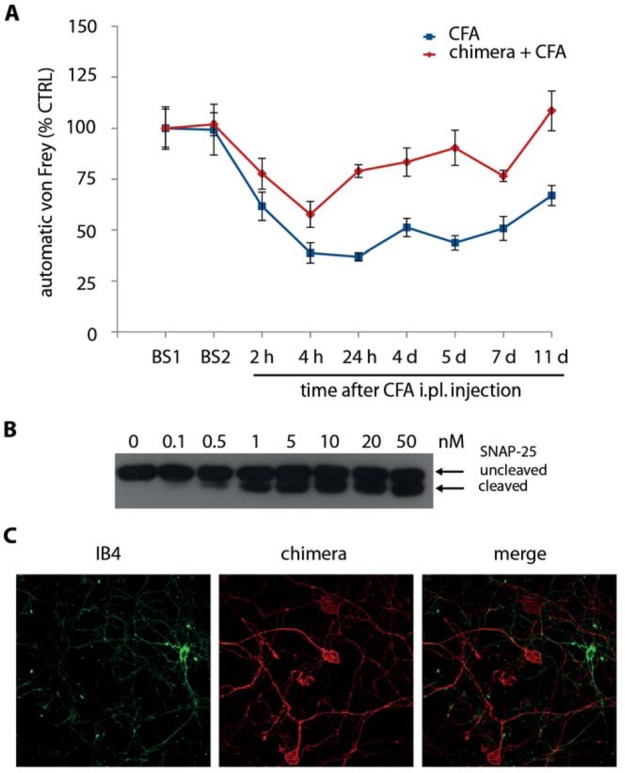Figure 6.

Intrathecally delivered clostridial chimera reduces mechanical hypersensitivity in a rat model of inflammatory pain. (A) Graph showing relative rat paw mechanical sensitivity measured using an automatic von Frey apparatus. The clostridial chimera (100 ng) was injected intrathecally (i.th.) at the L4-L5 level of spinal cord (red diamonds, n = 6). Control rats (blue squares) received i.th. injection of vehicle (saline). CFA was injected into left hind paw (intraplantar, i.pl.) and mechanical hypersensitivity was assessed between 2 h and 11 days after CFA. BS1 – basal pain threshold prior to i.th. injections; BS2 – basal pain threshold three days after i.th. injections. Data are expressed as % of control (basal pain threshold prior to the i.th. injection) ± SEM. (B) Immunoblot showing that the clostridial chimera even at high concentrations cleaves only 50% of neuronal SNAP-25, suggesting a degree of specificity in neuronal targeting by the chimera. (C) Confocal microscopy images of cultured dorsal root ganglion neurons, exposed to both the clostridial chimera and IB4 lectin, demonstrate that the clostridial chimera targets an IB4-lectin negative subpopulation of the sensory cells.
